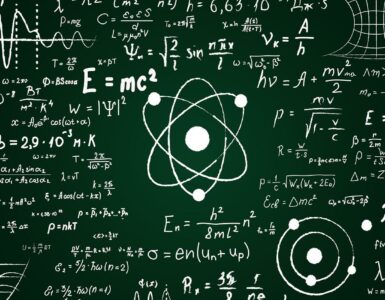Momentum and impulse are two closely related concepts in physics that describe the motion of objects and the effects of forces applied over time. These concepts are essential for understanding collisions, explosions, and the transfer of motion between objects. In this article, we will explore the definitions of momentum and impulse, explain their relationship, and demonstrate how to apply them with practical examples.
What is Momentum?
Momentum is a measure of the motion of an object and depends on both its mass and velocity. It is a vector quantity, which means it has both magnitude and direction. Mathematically, momentum ($p$) is defined as:

Where:
- $p$ is the momentum (in kilogram meters per second, or $\text{kg} \cdot \text{m/s}$),
- $m$ is the mass of the object (in kilograms),
- $v$ is the velocity of the object (in meters per second).
Momentum can be thought of as “mass in motion.” The greater the mass or velocity of an object, the more momentum it has, and the harder it is to stop or change its direction.
Example of Momentum
Consider a car with a mass of $1000 \, \text{kg}$ moving at a velocity of $20 \, \text{m/s}$. The momentum of the car is:

This means the car has a momentum of $20,000 \, \text{kg} \cdot \text{m/s}$ in the direction of its motion.
What is Impulse?
Impulse is a measure of the change in momentum of an object when a force is applied over a period of time. It is also a vector quantity, and it can be thought of as the effect of a force acting on an object for a specific duration. Mathematically, impulse ($J$) is defined as:

Where:
- $J$ is the impulse (in Newton seconds, or N·s),
- $F$ is the force applied (in Newtons),
- $\Delta t$ is the time interval over which the force is applied (in seconds).
Impulse is also related to the change in momentum of an object. According to the Impulse-Momentum Theorem, the impulse applied to an object is equal to the change in its momentum:

This theorem shows that if a force acts on an object over time, it changes the object’s velocity, and hence, its momentum.
Example of Impulse
Suppose a soccer player kicks a ball with a force of $50 \, \text{N}$ for $0.2 \, \text{seconds}$. The impulse delivered to the ball is:

This impulse causes the ball’s momentum to change by $10 \, \text{kg} \cdot \text{m/s}$ in the direction of the force applied.
The Relationship Between Momentum and Impulse
Momentum and impulse are directly related through the Impulse-Momentum Theorem, which states that the change in momentum of an object is equal to the impulse applied to it. This relationship is written as:

Where:
- $\Delta p$ is the change in momentum of the object,
- $J$ is the impulse applied to the object,
- $F$ is the force applied to the object,
- $\Delta t$ is the time over which the force is applied.
If a large force is applied for a short time, or a smaller force is applied over a longer period, both can result in the same impulse and hence the same change in momentum. This concept is critical in understanding how collisions, impacts, and explosions affect objects.
Conservation of Momentum
One of the most important principles related to momentum is the Law of Conservation of Momentum. It states that in a closed system (one with no external forces), the total momentum of the system remains constant before and after an event like a collision or explosion.
Mathematically, the law can be expressed as:

This principle is especially useful for solving problems involving collisions or interactions between objects.
Example: Elastic Collision
In an elastic collision, two objects collide and bounce off each other without losing kinetic energy. For example, imagine two billiard balls colliding. The total momentum before and after the collision is conserved.
Suppose two billiard balls, one with a mass of $0.5 \, \text{kg}$ moving at $4 \, \text{m/s}$ and another at rest, collide head-on. After the collision, the first ball comes to rest, and the second ball moves away. The total momentum of the system before and after the collision is:

Since momentum is conserved, the second ball must have gained all of the momentum:

If the second ball has the same mass as the first, its velocity will be $4 \, \text{m/s}$ after the collision.
Example: Inelastic Collision
In an inelastic collision, objects stick together or deform after the collision, and some kinetic energy is lost, though the total momentum is still conserved.
Suppose two cars, one with a mass of $1000 \, \text{kg}$ moving at $20 \, \text{m/s}$ and another with a mass of $1500 \, \text{kg}$ moving at $10 \, \text{m/s}$, collide and stick together. What is their velocity after the collision?
Before the collision, the total momentum is:

Substitute the values:

After the collision, the two cars stick together and move with the same velocity ($v_{\text{final}}$). The total mass of the combined system is $1000 \, \text{kg} + 1500 \, \text{kg} = 2500 \, \text{kg}$, so:

Since momentum is conserved:

Solving for $v_{\text{final}}$:

So, after the collision, the two cars move together at a velocity of $14 \, \text{m/s}$.
Applications of Momentum and Impulse
Momentum and impulse are essential concepts with numerous real-world applications across various fields, including sports, engineering, and safety.
1. Car Safety Features
Modern cars are designed with features such as airbags and crumple zones that maximize the time over which forces are applied during a collision. According to the impulse-momentum theorem, increasing the time over which the collision occurs (via airbags or crumple zones) reduces the force on passengers, making the crash less deadly.
2. Sports
In sports, athletes frequently apply concepts of momentum and impulse. For example, a baseball player follows through with their swing to increase the time of contact between the bat and the ball, thus maximizing the impulse and increasing the ball’s momentum.
3. Rocket Propulsion
In rocketry, momentum conservation is used to understand how rockets propel themselves forward. When a rocket expels exhaust gases backward, the rocket gains momentum in the opposite direction (Newton’s Third Law), allowing it to accelerate.
Common Mistakes to Avoid
- Confusing Momentum and Force: Remember that momentum depends on both mass and velocity, while force is a separate quantity related to the rate of change of momentum.
- Forgetting Direction: Both momentum and impulse are vector quantities, so direction matters. Be careful when adding or subtracting momentum values in different directions.
- Neglecting Conservation of Momentum: Always remember that the total momentum of a system is conserved in the absence of external forces, regardless of whether kinetic energy is conserved.
Conclusion
Momentum and impulse are powerful tools for understanding how objects move and interact when forces are applied. The Impulse-Momentum Theorem connects these two concepts and helps us analyze everything from car crashes to athletic performance. Whether dealing with collisions, impacts, or everyday motion, mastering momentum and impulse is essential for solving a wide range of physics problems.




Add comment